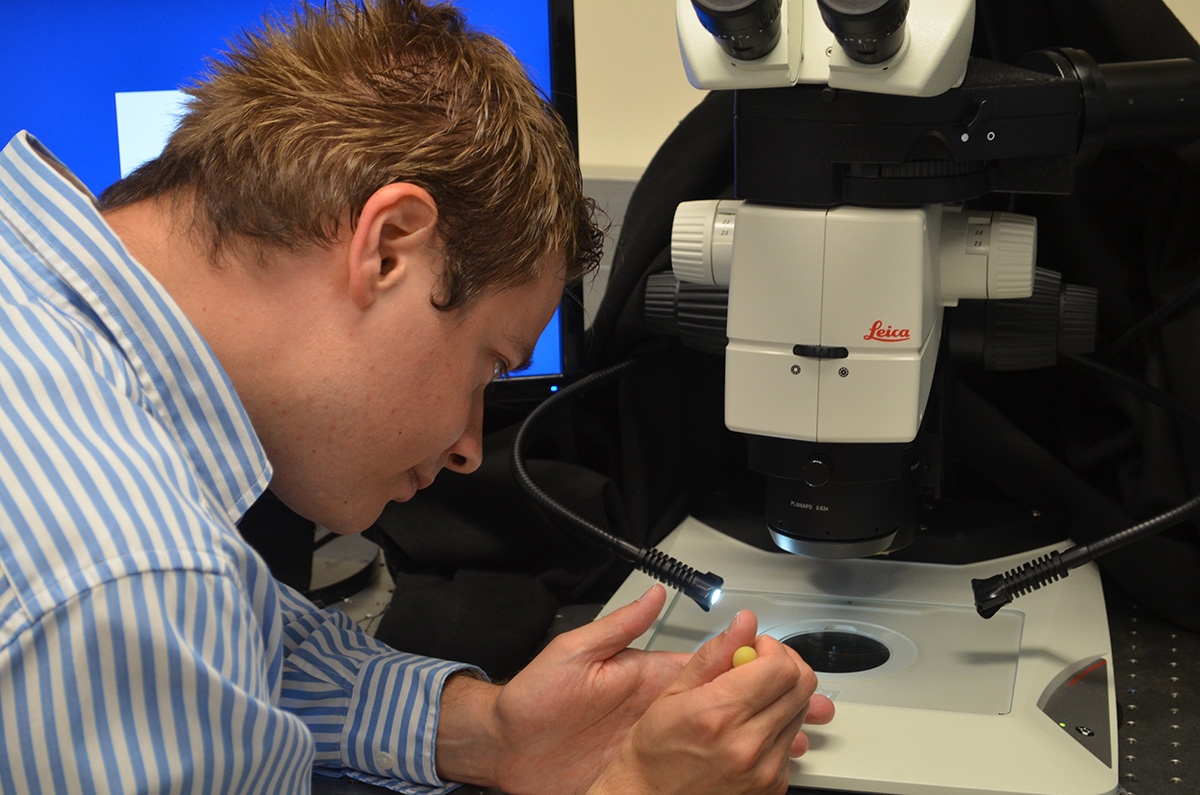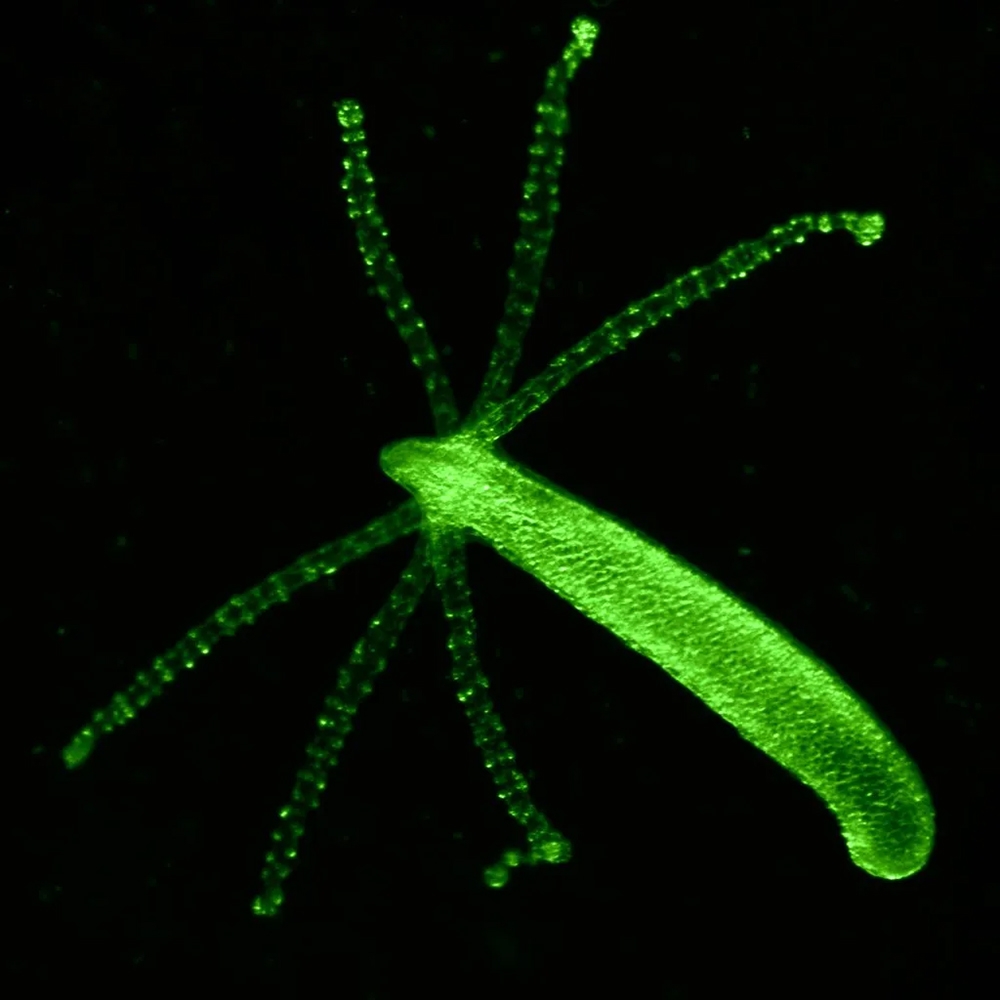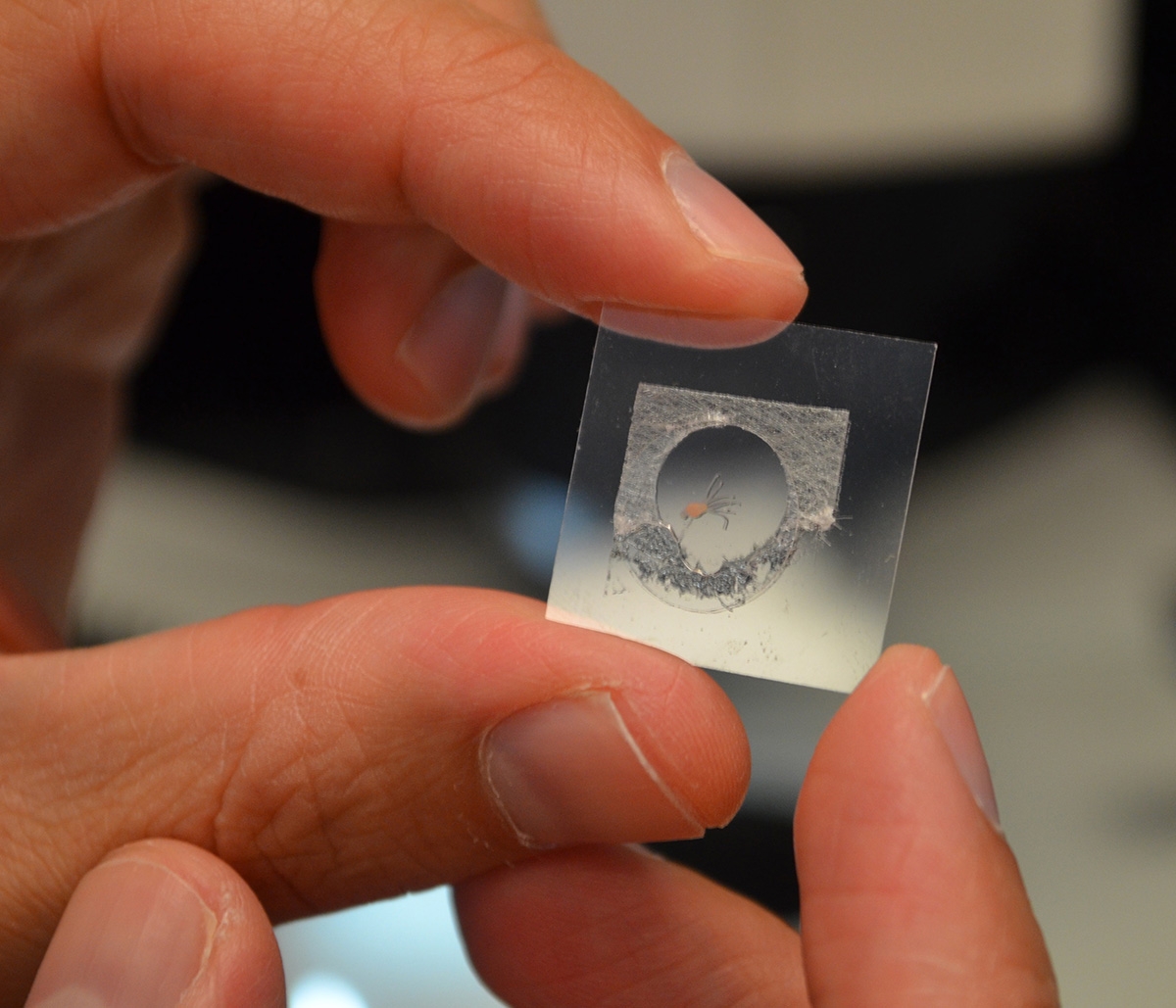Do hydra sleep? Grass Fellow searches for behavioral cycles in primitive nervous system

Compared to the human brain, built from hundreds of billions of tightly clustered nerve cells, the hydra brain (or “nerve net”) can function with a mere 10,000 widely dispersed neurons. A relative of the jellyfish, this tiny, tubular and tentacled species (H. vulgaris) provides insight into the primitive organization of the nervous system.
“Hydra give us a huge advantage when it comes to imaging. It is easier to tell each neuron apart from its neighbors because there is space between them; it’s a net rather than a densely packed brain,” says Christophe Dupré of Columbia University, a Grass Fellow at the MBL this summer. Dupré is exploiting the hydra’s small, diffuse brain network to gauge whole-brain activity and associated behaviors, an elusive goal in more complex nervous systems.

To measure activity in each of the hydra’s neurons simultaneously, Dupré is using calcium imaging, a method for tracking the calcium flow within a cell or tissue that was adapted for neural investigation by a team including his mentor, Rafael Yuste of Columbia University. Calcium changes in neurons indicate when they are active, or “firing.”
Dupré intends to determine whether the hydra nervous system displays “cycles” of activity, or repeated sequences of neural firing and their associated behaviors. These cycles are akin to circadian rhythms and possibly sleep patterns.
“Cycles have been observed in most animals, but not yet hydra,” Dupré explains. “Since hydra are representative of the earliest nervous systems in evolution, this gives us an opportunity to look at whether hydra exhibit a sleep-like state—and if this sleep-like state evolutionarily preceded animals that we know to sleep today."

The first phase of Dupré’s experiment focuses on patterns of behavior rather than patterns of cellular communication. He is collecting 24-hour-long movies of his specimens, watching for changes in their body contractions while shining white or red light in alternating, 12-hour increments. The white light simulates day, and the red night, since hydra cannot detect the latter color. If the animals are less active during the night, perhaps adding light will prompt such sequences of undulating movement. If so, this may indicate that exposure to sunlight in the real world increases activity, for reasons such as locating prey.
“Scientists explore cycles of activity all the time in mice by giving them a running wheel,” Dupré says. “If you compare the number of rotations of that wheel in the day versus the night, cycles will emerge. But we still don't have this kind of paradigm for hydra.”

Dupré is proposing that locomotion correlates to neural activity: the more the hydra moves, the more its nerve net fires. Thus, step two of Dupré’s study will use calcium imaging to analyze select periods of movement (or rest) as the behavioral cycles unfold, hopefully demonstrating the relationship between motion and brain activity. Since Dupré’s movies take place in a more naturalistic setting—as opposed to under the intense fluorescence required for calcium imaging—his initial experimental phase will help to strengthen his hypothesis.
“I’m still in the troubleshooting phase,” he says. “But based on the data I’ve collected so far, I’m confident that I can accurately assess movement. Soon I’ll begin looking for cycles in that movement.”
While Dupré remains in the early stages of discovery, he’s cast a small but wide (nerve) net—which is precisely the strength of his research.